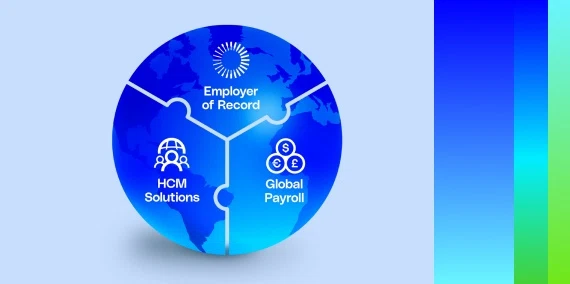Work is no longer a place we go. Now, work can be done anywhere — from office cubicles to virtual screens, one thing remains the same: A positive employee experience is the cornerstone of successful workplaces. But what happens when employees’ perceptions don’t match the ideals their employer preaches? That’s when companies are faced with what is known as an employee experience gap.
What is an employee experience gap?
In its simplest form, the employee experience gap is a misalignment between how employers assume their workforce feels about working for the company vs. how employees actually feel. For example, a company might promote its work environment and company culture as family-oriented.
But in reality, employees are expected to work long hours or be constantly available, leading to a lack of work-life balance and excessive time away from the worker’s actual family. This is the employee experience gap in all of its glory.
The stark consequences of an employee experience gap
The employee experience begins at the start of a worker’s journey with a company, from recruitment and interviewing, right through the offboarding process. Disconnects within a company’s hierarchical structure can be highly damaging to the overall health of an organization. For instance, when employees feel that their viewpoints are not appreciated or considered, they might stop voicing their concerns, lowering employee engagement. But in turn, this creates a gap, leading management to believe that their team completely agrees with how the decision-making process is executed.
Over time, this gap in communication can widen into an abyss in which an employee’s sense of purpose can crumble. In fact, a Gartner survey found that only 25% of 3,300 employees surveyed felt confident about their career at their current company. And only 41% said they felt comfortable sharing concerns with their leaders. These findings scream workplace misalignment. Moreover, in instances where the communication between employee and employer is severely lacking, traditional approaches, such as offering superficial benefits, are not enough to salvage an employee’s loyalty to the organization.
This is referenced in an episode of G-P’s Pangeo Perspectives podcast by guest Andrea Goodkin, People and Technology Practice Leader at HUB International. Goodkin spoke about how important it is for companies to take the time to understand their employees’ expectations, saying: “The reality is that a significant proportion of the population doesn’t really care about traditional benefits anymore. It’s about so many other things, and many employees get left behind.”
How to bridge the employee experience gap
As companies begin to experience the detrimental consequences of an employee experience gap, devising means of bridging it becomes paramount. With that in mind, let’s examine three key strategies that G-P believes can successfully translate a company’s ethos into meaningful reality to enhance the day-to-day workplace environment and boost employee satisfaction.

1. Clear communication roadblocks.
Our 2023 Global Growth report uncovered a few employee needs, particularly for global workers, that can help companies mend the employee experience gap.
When working across multiple time zones, for instance, there are teething problems that can hinder global collaboration and personal and professional growth. According to our findings, clearing communication roadblocks is the most effective ladder to scale these obstacles. This can be accomplished by scheduling language-inclusive all-hands meetings in different time zones throughout the year.
Underscoring the importance of face time and opportunities to share and receive employee feedback for career growth, 47% of respondents believe that team leaders should be online during at least some hours that overlap with the workforce’s different time zones. Lack of visibility from team leaders can stoke doubts in an employee’s sense of purpose, aggravating any pre-existing gaps workers might already be feeling. The key is to spend time identifying whatever specific roadblocks are creating the experience gaps, then follow up with plans to allow good communication to flow again. In this case, scheduling regular screen time with any worker located outside of the team leader’s time zone could be a good preventive measure.
2. Leverage the right tools for you.
Of course, in today’s digital age, technology tools to bridge communication are easily accessible. However, according to G-P’s Director of Employee Experience Connie Diaz, it’s less about the choice of tool and more about how the tools are leveraged. During a presentation at Running Remote last year, Diaz explained that using a lot of tools can actually be ineffective and overwhelming.
Therefore, understanding what outcome employees should achieve from each tool is a critical first step. Built into one of G-P’s messaging tools is the functionality to see what time zone your co-workers are in. If you’re about to send a message to someone outside their local working hours, you’re prompted to delay sending until they’re back online. This customizable feature allows employees to practice work-life balance and tailor their workspace to suit their preferences and working style, which in turn, can enhance the employee experience.
3. Focus on outcomes over activity.
Focusing on outcomes over activity is another method to close the employee experience gap. Diaz explains: “I think when you start focusing on ‘what is the outcome? What is the problem we are trying to solve?’…. Then I think people can curate their own journey as long as we are clear on what the outcome should be.”
Overall, any form of employee autonomy backboned by communication — be it scheduling flexibility or having a decisive say in goal setting — is a sound method that allows workers to perform at their happiest and at their best. “For us [G-P], a lot of it [employee experience] is our thinking that ‘behind every hire is a human.’ And when we think about culture and capability and engagement, we really think one size fits one, so being able to show up as yourself and really curating that experience and thinking about the employee as a whole human, not just the pieces of us that show up at work.”
How G-P can help
Deploying a successful employee experience begins with recruitment and is pivotal throughout the entire employment lifecycle. G-P facilitates this journey by offering everything companies need to rapidly plan, hire, and manage global teams in 180+ countries.
Our #1 Global Growth Platform™ empowers companies to support employees at all stages while maintaining compliance with local labor laws. By automating laborious administrative tasks, HR professionals can focus on their teams’ wellbeing and productivity. We take care of the hard part, so you can focus on the best part — growing your business globally.
Book a demo to learn more about our platform.










